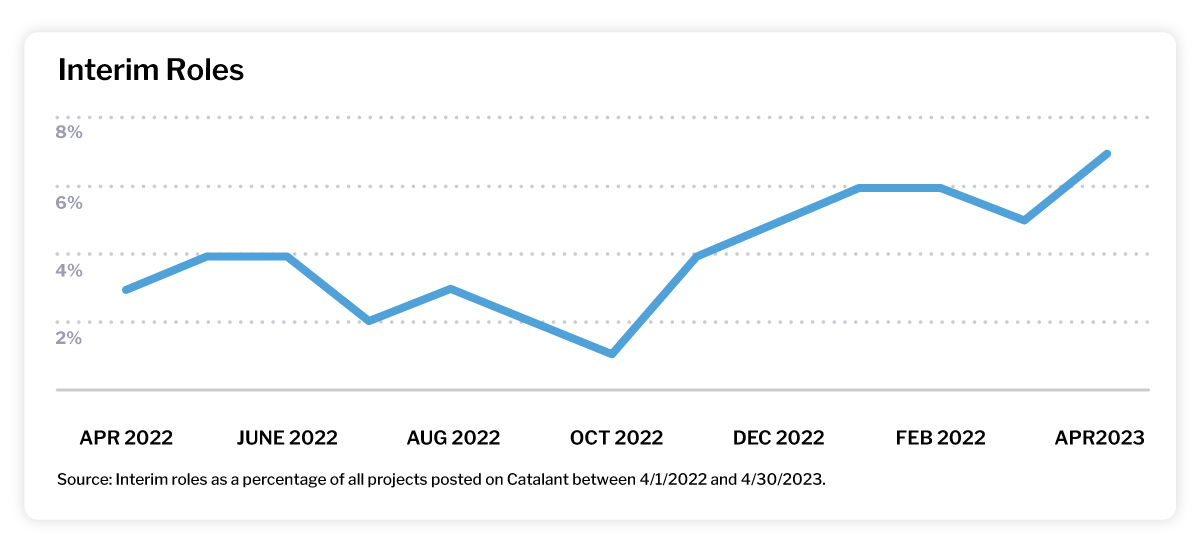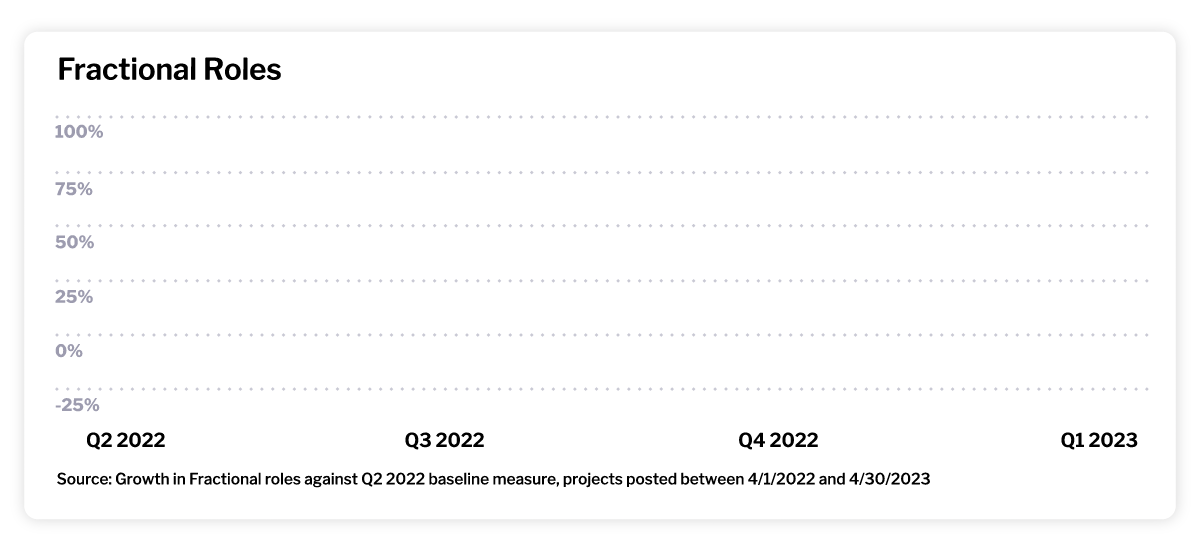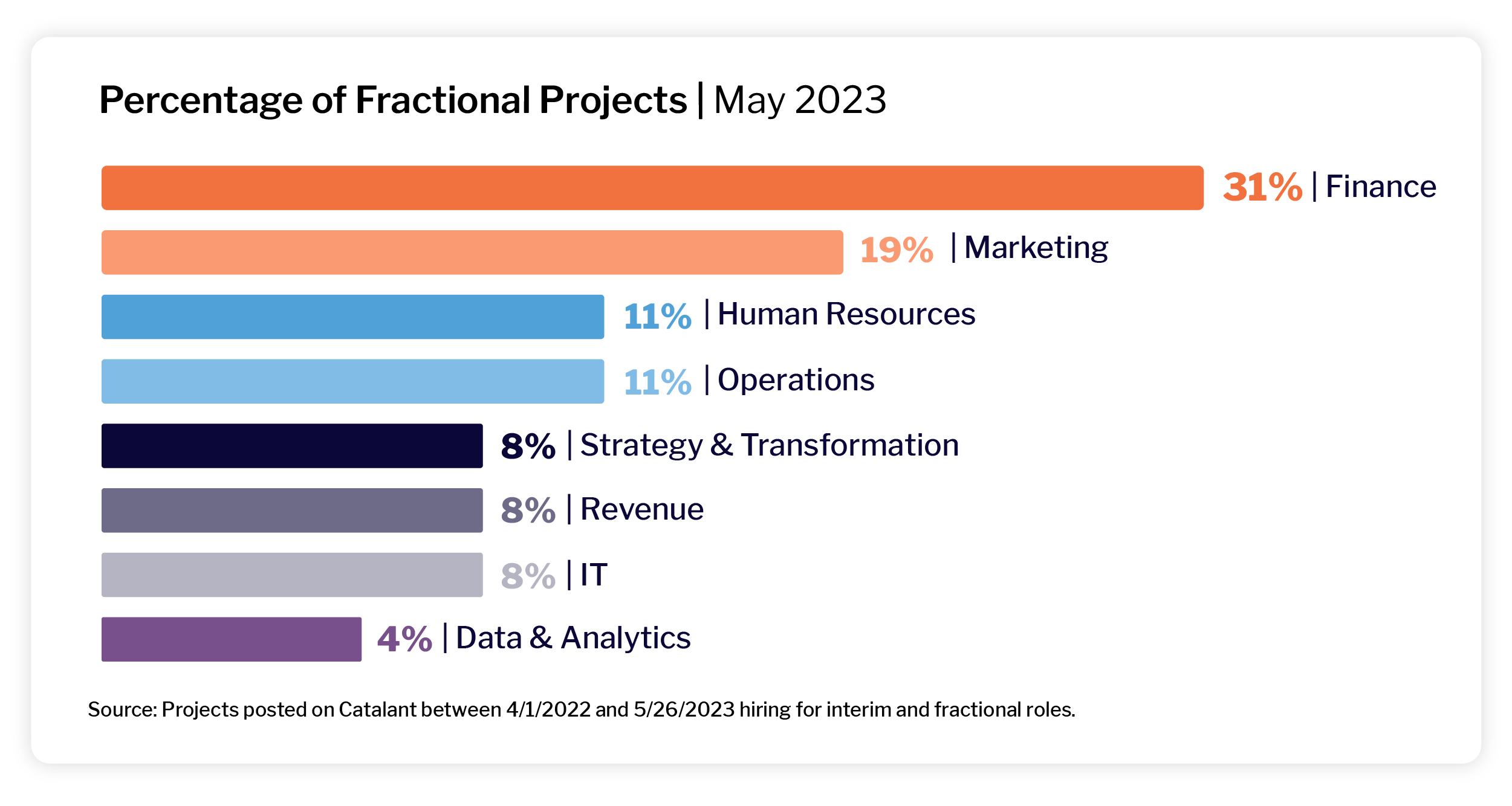Fractional Workers Can Tackle Critical Work Quickly and Efficiently

In the face of hiring freezes and workforce reductions we’ve observed an increased appetite for resourcing creativity and flexibility. Business leaders need to move quickly in response to major market pressures. As we look at our project data we see a new trend emerging – more and more operators are leaning on fractional workers.
The Rise Of Fractional Work
Fractional workers are professionals who work less than 100% of the work week. They’re different from most part-time employees because they may work for multiple firms at the same time and tend to be used as longer-term solutions vs. short-term interim support. As the Wall Street Journal indicated in its February report on the rise of the fractional executive, these workers tend to be more seasoned in their careers, bringing an attractive level of experience to work that necessitates a plug-and-play approach but doesn’t require a full-time employee.
According to data from the Bureau of Labor Statistics, temporary business management roles were up 18% from 2021 to 2022 and 57% since 2020. What’s behind this growth? The hiring challenges of 2021 and early 2022 are merging with the resource constraints of late 2022. Fractional talent and interim support are highly cost-effective, particularly in small to medium-sized enterprises and for PE- and VC-backed companies.
Catalant project data shows a significant increase in demand for interim and fractional roles over the past year. When critical skills are hard to come by and resources are tight, hiring an experienced specialist on a dynamic, part-time basis allows for far more flexibility in the face of uncertainty. We most often see this type of work in PE-backed companies doing turnaround transformational work, M&A, capital raises, and cases where the experience of someone who has “been there, done that,” is desired, but without the full-time need.
What the Catalant Data Shows


We observe three primary ways that organizations use Catalant to hire interim and fractional roles:
- Interim talent during a full-time search. 40% of the interim roles posted on Catalant are temporary roles filling a vacant position while a company searches for a long-term, full-time replacement. This ensures work isn’t stalled out while a permanent search is underway.
- Try before you buy. Many of the interim roles on Catalant are hiring for a temporary-to-permanent transition, allowing for a trial period before committing to the long-term.
- Fractional talent when full-time isn’t justified. There’s a major increase in bringing on fractional workers, allowing companies to bring on talent without having to commit to a full-time employee. And it makes sense – there’s no reason every role needs to be 40 or 50 hours a week.
Enabling leverage across all levels of an organization
While C-level fractional roles might be most common, fractional roles are actually used at all levels within organizations. Catalant data shows organizations looking for everything from highly specialized individual contributors to C-Suite executives.
In the aforementioned Wall Street Journal report on fractional work, it found that the most popular roles to hire fractionally are in the finance department. On Catalant we see something similar – finance roles make up just over 30% of fractional positions posted on the platform. The second most common department is Marketing, at 19%.
- In Finance, these fractional roles range from part-time Controllers during the audit and financial planning process to FP&A to help with improved planning, projections, and performance analysis to CFO roles at PE-backed companies that don’t require a full-time resource. (To better understand how finance departments use Catalant, read our April Insights report).
- In Marketing, this work ranges from digital or channel specialists to part-time CMOs to guide strategy.

A fractional employee’s perspective:
Gemma Craven, Catalant Expert
While the demand is certainly growing on the part of organizations looking for fractional talent, it’s also growing on the talent side. One example is Gemma Craven. An experienced marketing executive, Gemma spent four months working at the VP-level of a consumer services company.

Fractional workers may still seem like a relatively new concept for some companies, but growth in it can’t be ignored – as of May 2023, we’ve already seen nearly as many fractional roles posted to the Catalant platform year to date as in all of 2022.
Organizations leveraging fractional talent are able to allocate the right amount of resources to problems, while not compromising on a top-tier skill set.
Tap into a network of fractional and interim support for your organization now, with Catalant.












